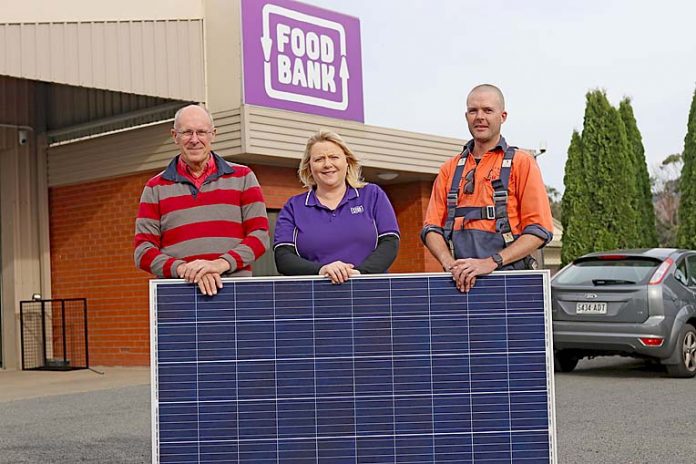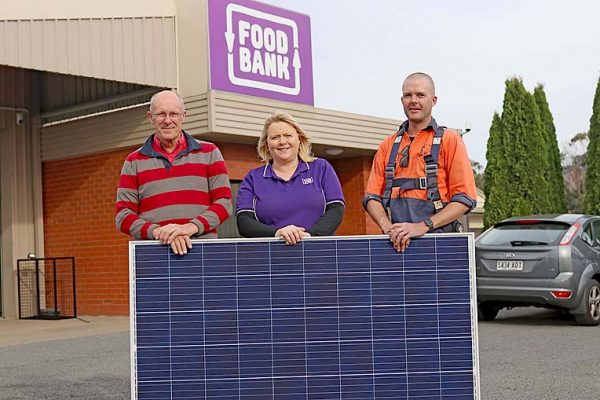

Picture: MOLLY TAYLOR
A CHARITY organisation which eases the cost of living burden for South East residents will be given its own cost relief through a new solar energy system.
The donated ShineHub system – valued at over $14,000 – is expected to save Foodbank Mount Gambier around $18 per day on its electricity costs, which soared to over $18,000 last year.
Collaborative efforts from Community Action for Sustainability (CAS) and ShineHub led to the installation of an 11.83kw, 43-panel system this week, with the Cave Road facility’s northern facing roof an ideal location.
Foodbank Mount Gambier branch manager Lynne Neshoda said she was shocked when she received the last bill, with on-site food storage systems and increased patronage among the main cost factors.
“Our community output for food has doubled in the past 18 months which has required more facility use,” Ms Neshoda said.
“This has resulted in our electricity costs increasing with more fridges, computers, lights, fans and heaters being installed.
“It is one of our biggest cost factors along with our rent.”
CAS member Alan Richardson was key to getting the energy-saving project rolling after a tour of the site.
“I am a Rotary Club of Mount Gambier member and underwent a tour of the facility through the club around 18 months ago,” he said.
“The company said if we could round up some people, they would help to fund an installation for a community project,” he said.
“This project was able to occur from the 100 other ShineHub South East installations.”
Mr Richardson said CAS was pleased Foodbank was a beneficiary and looked forward to further collaborations through both Rotary and CAS.
Lonergan and Muhovics director Jamie Muhovics said he was thrilled to be involved in the community-minded initiative, installing the system this week as one of ShineHub’s trusted installation providers.
“I think it is great the company can give employment to regional South East business owners,” Mr Muhovics said.
“We have been ShineHub installers for around 14 months and have installed around 25 systems.”
Mr Muhovics said Foodbank would use more power during the day compared to residential properties given it was being used during business hours.
“At a lot of households people go to work and kids go to school so they are not using their power as much,” he said.
“At Foodbank there is more refrigeration which works harder because they are being opened more often.
“These panels will reduce their electricity costs quite significantly in the long run.”
Ms Neshoda said although FoodBank was a not-for-profit, charity organisation, it was not immune to utility bills.
“These panels are allowing us to use our environment more efficiently,” she said.
“Foodbank is a big environmental-plus as the food we receive would likely go to landfill anyway.
“We also have energy-saving lights which were recently changed as our large ones were pulling a lot of power.”
Ms Neshoda said she was grateful for the community effort which allowed the project to develop.
“We do not just have impact on Mount Gambier but other parts of the region,” she said.
“The money we save from our electricity will go back into food around the Limestone Coast.”





